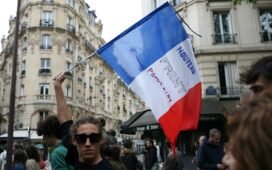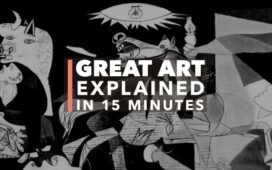Designing their new republic, the Founding Fathers of the United States of America looked back to reference points in classical antiquity. That instinct continued to shape American endeavors long thereafter, and not just political ones. Take the example of Mount Rushmore, one of the country’s most popular tourist attractions. Originally conceived in the early nineteen-twenties as a mountain sculpture of America’s wild-west heroes, a means of raising the status of the fledgling state of South Dakota, it was soon changed into a stone tribute to four presidents: Founding Fathers George Washington and Thomas Jefferson as well as Abraham Lincoln and Theodore Roosevelt.
Mount Rushmore’s sculptor Gutzon Borglum suggested the switch from regional figures to national ones, and it wouldn’t be the last good idea he would bring to the table. As explained in the Primal Space video above, he also figured out how to replicate his initial sculpture of the four presidents, made at one-twelfth-scale, on a 500-foot-tall cliff edge.
Building all the necessary infrastructure on and around the mountain constituted a major project in and of itself. But when the workers got into their harnesses, how would they know where to direct their jackhammers into the rock? To guide them, Borglum adapted a mechanical technique used by ancient Greeks to copy statues, a “pointing machine” that could “measure specific points on a sculpture relative to a reference point,” making a three-dimensional shape transferable from one sculpture to another.
Borglum designed a large-scale pointing machine that could be installed atop the mountain and positioned to show workers where and how deep to drill. Though the system worked well, the team could only make progress so fast: after fourteen years, Mount Rushmore remained incomplete when Borglum’s death and World War II put a stop to it altogether. Yet enough had been finished to give it the iconic appearance that has made it recognizable the world over, if not always by name. When I recently gave a talk about American history to some young students in South Korea, where I live, one of them identified a photo of Mount Rushmore as Mount Olympus — and, in a civilizational sense, maybe she was on to something.
Related Content:
Behold Ancient Egyptian, Greek & Roman Sculptures in Their Original Color
The Metropolitan Museum of Art Restores the Original Colors to Ancient Statues
How Ancient Greek Statues Really Looked: Research Reveals Their Bold, Bright Colors and Patterns
How Monument Valley Became the Most Iconic Landscape of the American West
Based in Seoul, Colin Marshall writes and broadcasts on cities, language, and culture. His projects include the Substack newsletter Books on Cities and the book The Stateless City: a Walk through 21st-Century Los Angeles. Follow him on the social network formerly known as Twitter at @colinmarshall.















